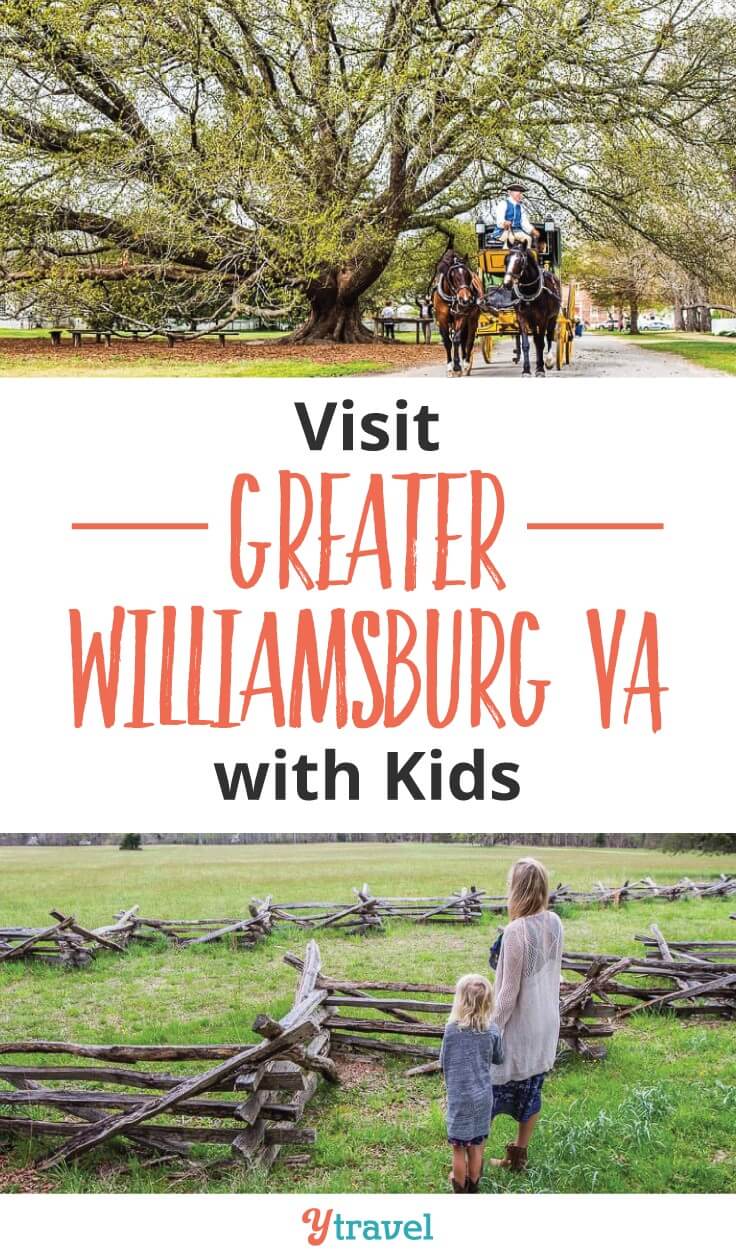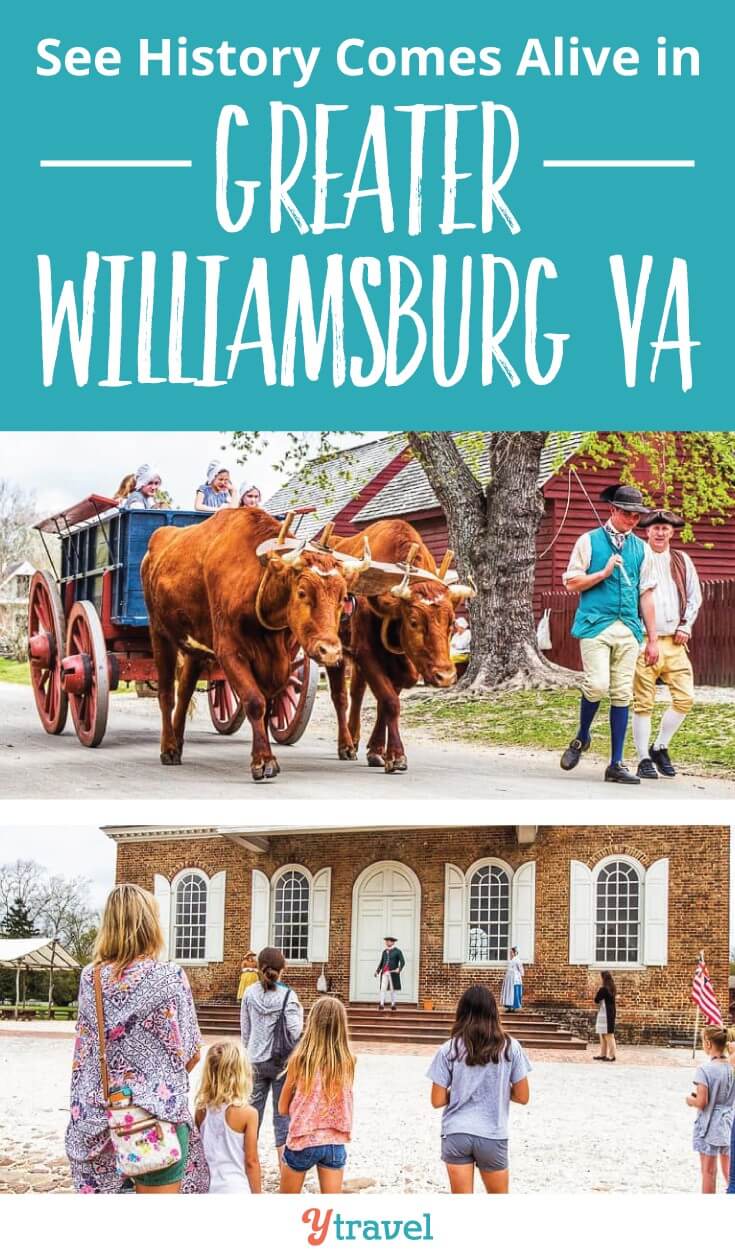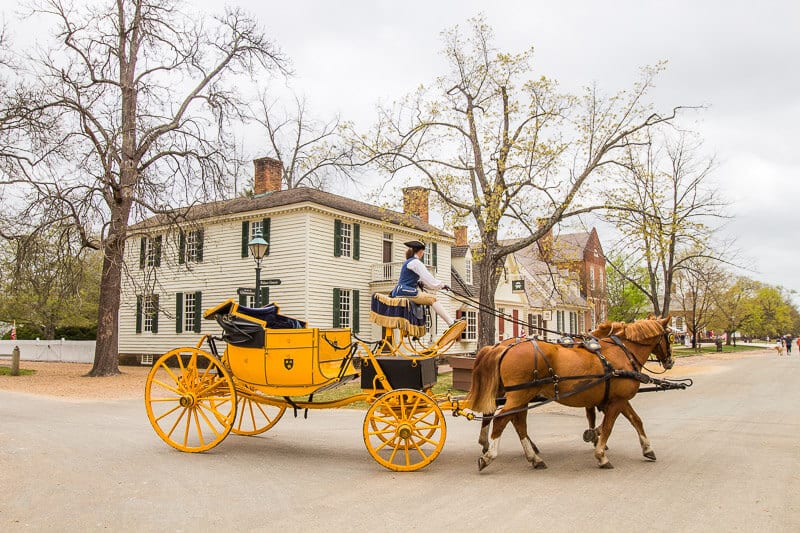
History can be difficult to learn, or teach, especially to children.
It’s a past filled with people, beliefs and lifestyles that seems to bear no significance on the present moment.
As a previous teacher, I know learning history from textbooks can be a boring a jumble of dates, battle names, a jigsaw puzzle of people and events, and meaningless facts to learn.
Children are so in tune with their imagination and present moment flow, that it’s hard to pull them into the past and understand something they can’t relate to.
Unless of course, you give them opportunities to live it in the present moment with their imagination.
Absorb the stories of the past
I don’t incorporate history lessons in my homeschooling, we instead experience history through our travel moments.
We give the girls the opportunities to experience the place history happened, so they can use their imagination to connect and their curiosity to explore.
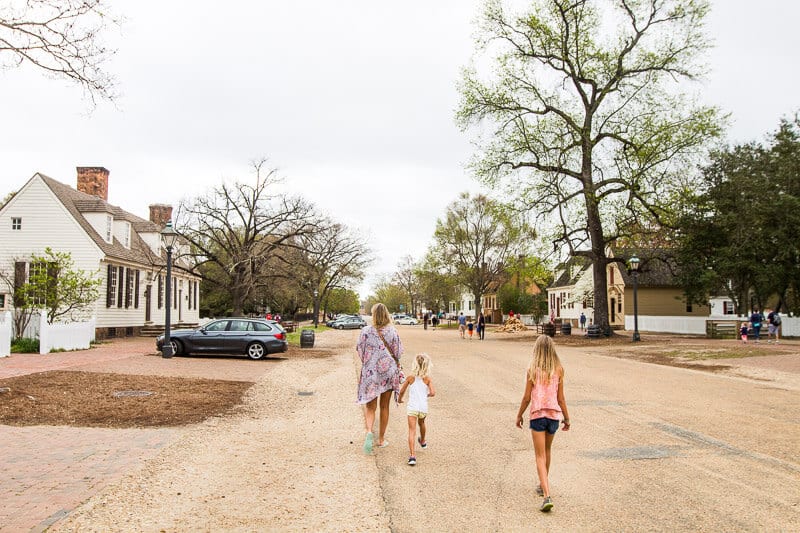
I don’t want them to learn facts and historical timelines.
I want them to absorb the stories of the past and understand the strength of the human spirit, so they may recognize their own greatness, form a sense of their own beliefs, and use that to create a better future for all.
So far on America Unplugged road trip, they have studied the evolution of music in Tennessee and the Civil Rights Trail from Slavery to the Civil Rights Movement to the modern day movements of standing up for liberty for all, and the Civil War history at Franklin and Gettysburg.
I was inspired and proud when Kalyra was asked, at the American Revolution Museum at Yorktown, what liberty means, and she wrote Equality.

Her lived experience of the Civil Rights Trail opened her eyes naturally to how intrinsically freedom is tied to equality.
In a crowded classroom with varying levels, interests, and focus abilities, it is extremely difficult to help kids make these connections.
Why learning about history is important?
History is the story that has helped create who we are, what we believe in, and shows us what we are capable of.
It (hopefully) inspires us to follow in the footsteps of those before us who created greatness, or, warns us to turn back from the path that creates the opposite.

Visiting Greater Williamsburg, VA gave me a fascinating insight into the birth of the United States, a greater understanding of the American culture, and strangely enough, a better understanding of my own culture.
The top historic sites in Greater Williamsburg, Virginia are made up of the Jamestown Settlement, Historic Jamestowne, Colonial Williamsburg, The American Revolution Museum at Yorktown and the Yorktown Battlefield.
What Greater Williamsburg taught me about my own culture
Living this historical story in Greater Williamsburg helped me finally understand why, even in modern times, Americans talk about freedom like they invented it and no one else has it.
As an Australian, I feel very free and have access to many opportunities. So, I used to get annoyed when Americans talk like they are the only free country in the world.

Yet, thanks to this visit to Greater Williamsburg, I understand it’s not a statement necessarily made in ignorance of other countries, but in celebration of how they arrived.
They believe in freedom for all as it’s what drove them to create the life they have now, which is why they are at the forefront of fighting for others to have it (most of the time – everything is mostly!)
We all travel with our own way of looking at the world. Many things we encounter will seem strange and we may be judgmental or overly critical of them.
But once we learn the stories and why they are so important, we can better understand. Our perspective changes and so we can connect more deeply to the culture.
It’s also only when we step outside of ourselves (or our own culture) that we can look back and understand ourselves better.
In learning more about America’s Revolution and their fight for liberty, I gained insights into the evolution of Australian culture.

Yes, I do feel freer, but my country is still under British Rule.
Over time, the Brits reign moved to merely just a figurehead, which has not restricted me from living a blossoming life, so I’m not too bothered.
Maybe I should be. Perhaps there are restrictions I am unaware of.
Perhaps Australians do have more of a “She’ll be right” attitude and acceptance of conditions rather than a fight for independence, liberty and constitutional rights like Americans do as we’ve always been subjugated into believing it is what it is and there is nothing we can do.
It’s why we have little faith or respect for our politicians and see them as crooks and liars out for no good.
It’s possibly why, when we see things as being wrong or unfair, we don’t turn out in thousands protesting on the streets like Americans do exercising their constitutional right to express their opinions and make change happen.
Because they are the government for the people by the people and they know they have the power to make a change. Look what they did during the Revolutionary War.
Perhaps, because we haven’t fought to create those rights ourselves, we aren’t so passionate about defending them, nor believe in our power to create change.
I don’t know the answers, but it’s interesting to consider. Without curiosity and connecting those dots of the past, we can’t evolve into something better.
Learning about the Revolutionary USA
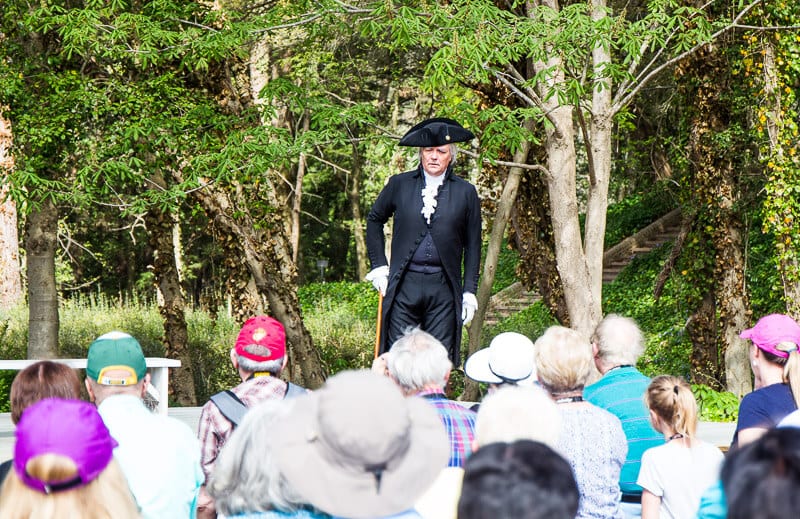
After years of fighting for their own independence, they were able to create the vision of what they were fighting for.
These wise, brave men who had studied philosophies of visionaries and teachers were able to spend time crafting a document, and a road map for the people to follow so their society could be exemplary.
As George Washington told us during a re-enactment at Colonial Williamsburg, the constitution was written with amendments, so the constitution could be changed to evolve with society and what was best for the common good.
This was quite profound for its time and indeed revolutionary.
Now I understand why Americans worship the constitution, leaders and political figures like George Washington, and their soldiers.
I’m now in love with George Washington. I didn’t even know he was a General in the war (and a brave, inspiring leader at that).
The story has been brilliantly told at the different museums and historic spots of Greater Williamsburg, VA.
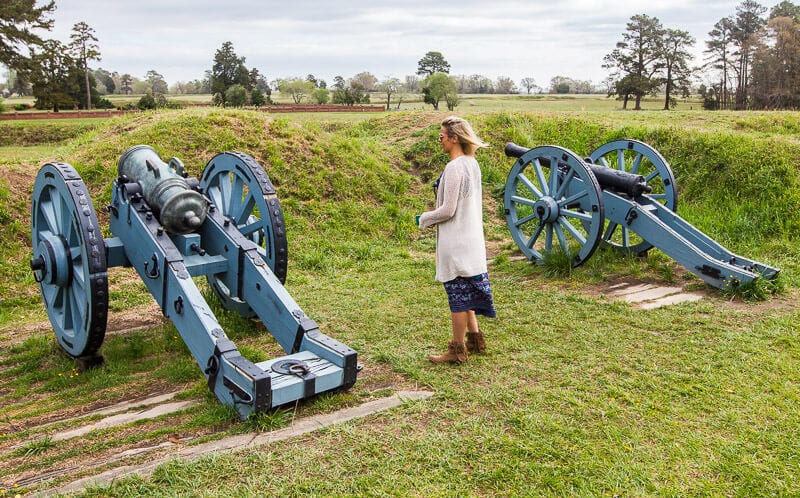
The girls have no need for Social Studies lessons to learn the facts, dates and battle names.
They’ve walked the battlefields, heard the stories, learned the wisdom and the philosophies, and felt what the fight was for.
That’s all they need to know.
Follow America’s Enduring Story in Williamsburg Virginia
For a comprehensive history lesson on America’s Enduring Story, I recommend spending a day at each of the following:
- Jamestown Settlement and Historic Jamestowne: where the first English colonists arrived and created the first settlement.
- Colonial Williamsburg: where the ideals founding the Constitution began to grow.
- Yorktown Battlefield and American Revolution Museum at Yorktown: where those hard-fought ideals became reality.
We visited in partnership with Visit Williamsburg. As normal, all insights, opinions, and words are my own.
Jamestown Settlement
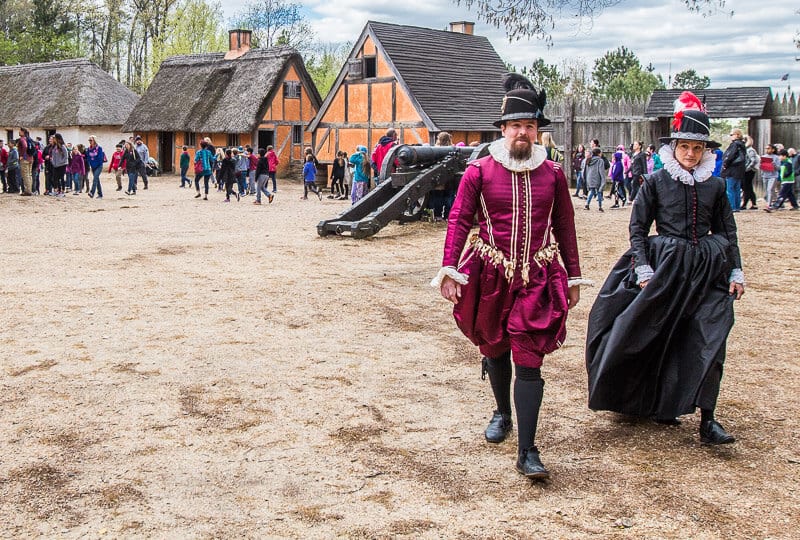
In 1607, English colonists arrived to establish a permanent English colony.
Despite enduring immense hardship, and almost failing several times, the settlement eventually grew and prospered.
Jamestown Settlement is a living history museum that tells that story. The museum, operated by the Commonwealth of Virginia’s Jamestown Yorktown Foundation is located a mile from the original site of the settlement.
Begin with the docudrama, 1607: A Nation Takes Root, which presents an overview of the first two decades of the Virginia colony.
Then explore the great hall of exhibits showcasing the journey from 1600 – 1699 when the capital of Virginia moved from Jamestown to Williamsburg.
The museum tells the different stories during this period from the English colonists, the local Powhatan Indian, and the West Central African cultures.
I had no idea that slaves were even a part of the beginnings of the English colony. I thought that came much later in US history.

The museum does a wonderful job of sharing the complexity of the relationship between the colonists and the Powhatan people.
I particularly loved the exhibit showing a life-size speaking Powhatan Indian girl, a slave boy, and a white colonist sharing their stories during this settlement period.
It’s so helpful for kids to make the perspective connection.
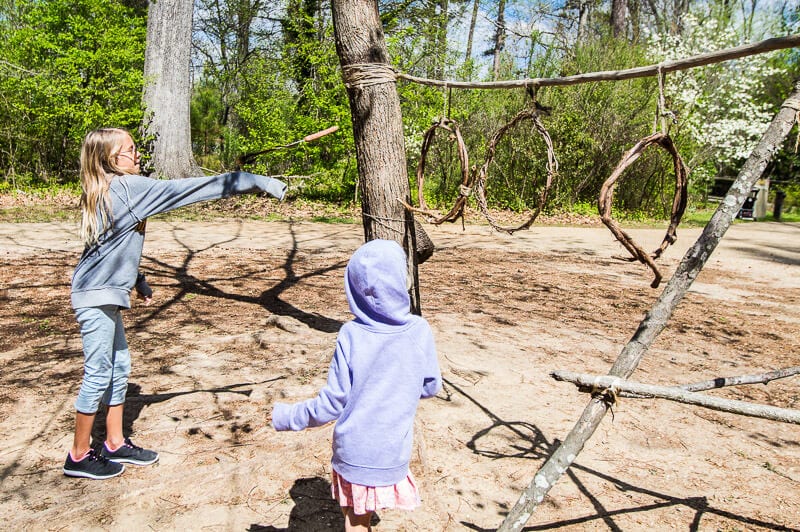
Outside is where the Jamestown Settlement comes alive for kids. There are three areas:
- The Powhatan Village: where you can walk through tepees, play feather games, learn how their canoes were made, how they farmed, and handle their deerskin clothes and fur blankets. The story of Pocahontas and how instrumental she was in helping to restore peace to the two is told extensively at this museum. Our girls were very excited to learn that she’s so much more than a Disney princess.
- The Jamestown Fort: historical interpreters demonstrate activities typical of daily life such as blacksmithing, farming, and domestic duties. Get a sense of the difficult living conditions endured by the colonists including starvation (and eating the dead bodies to survive) harsh weather, and frequent Indian attacks.
- Recreated Ships: Down by the water, climb into a sailor’s bunk, steer with a whipstaff, and wander through the cramped decks below on one of three recreated ships that brought the first English colonists to Virginia in 1607.

There are free guided tours of the outside conducted throughout the day that are about an hour long.
We joined one for a brief time before the girls got a bit antsy, so we finished it on our own.
It’s well worth joining a tour to get more in-depth insights and stories.
Cost:
- $17 adults
- $8 ages 6-12
- Combination ticket with American Revolution Museum at Yorktown $25.50 adults, $12.25 (6-12)
Open: 9-5pm daily, year-round and closing 6 pm June 15 – August 15
Historic Jamestowne

Historic Jamestowne is the original site of the 1607 Fort and the place where legendary figures John Smith, Pocahontas, John Rolfe and more walked and helped write the beginnings of the USA.
This is a preserved area where you’ll see crumbling walks and remains of the settlement that was unearthed by archaeologists in 1994.
You can possibly even see archaeologists at work as they continue to recover artifacts that give a deeper insight into the settlement story and life in Jamestown.
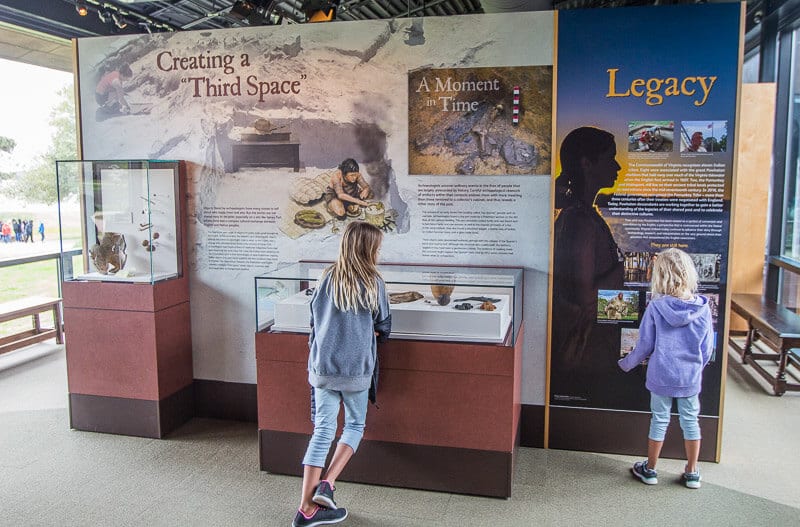

Don’t miss the Archearium, which showcases various artifacts as well as actual skeletons.
You’ll learn who they are, how they met their fate and what their role and life in the community was like.
It’s amazing how much they can learn from the bones of a person who has been dead for hundreds of years.
There is a 5-mile Island Loop Drive you can do to explore the natural environment of Jamestown Island. Waling and interpretative signs continue to tell the story.
We were going to explore on kayaks and then bikes, but the cold weather, unusual for this time of year in Greater Williamsburg, drove us indoors.
I know a living history experience is great when the girls ask many curious questions. Kalyra was baffled as to why the settlers chose Jamestown as the water was full of salt so undrinkable and conditions were so harsh.
It was great for us to use our skills of reasoning and prediction to solve the mystery.
When we reached the visitor center we discovered an exhibit on the wall explaining the reasons they did choose Jamestown and stay there despite it seeming like a bad choice.
Cost:
- $14 adults (7-day pass) 16 and over
- Under $15 free
Open: 8:30am – 4:30pm daily
Colonial Williamsburg

Step away from the hustle and bustle of 2018 and into the world of horse and carts clipping over cobblestone streets.
Really. Slow down and amble beside them.
Listen to the leaves rustle as the breeze brushes past your face. It’s so quiet and slow here that you can’t miss the sounds of nature.
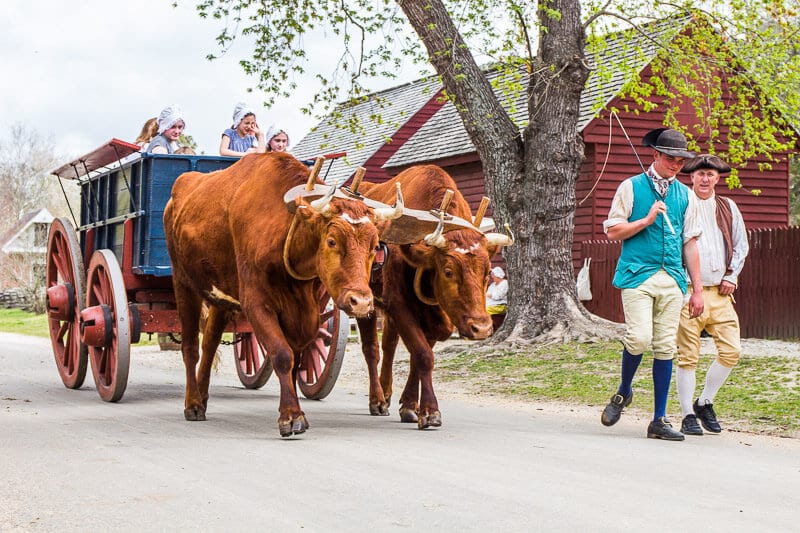
You will love exploring the beautiful restored 18th Century Colonial Williamsburg. It reminded me so much of Old Sydney Town back home in Australia, which was one of my favorite things to do with my family as a child.
At Old Sydney Town, we’d watch the live re-enactments of prisoners being whipped and sentenced and ride around in bullock trains.
It was the perfect way to engage with the past and understand who we were as Australians.

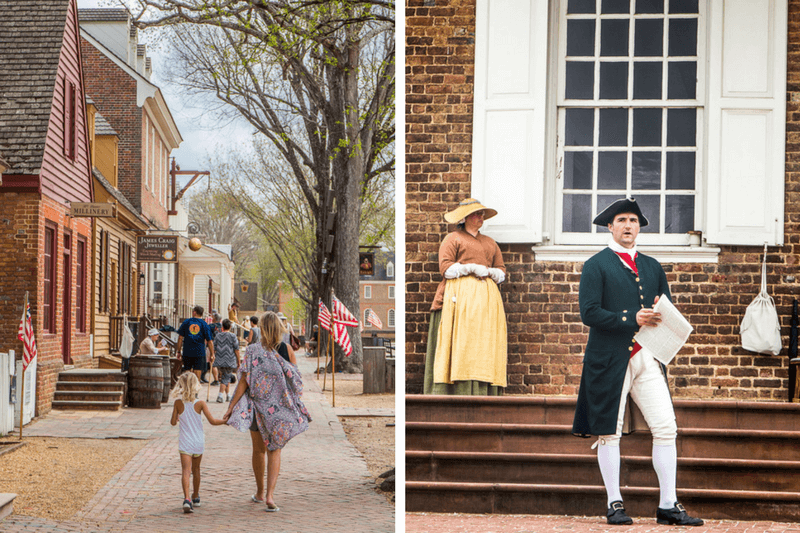
The live history at Colonial Williamsburg will not be as brutal, but the re-enactments and characters roaming the streets give you a profound sense of the evolving American story and help kids understand the ideas and values that crafted the world they live in today.
There are over 35 historical sites and 22 trade sites in Colonial Williamsburg, including the Capitol, where the people’s representatives voted for Independence; the opulent Governor’s Palace; and working trade shops including the apothecary, the shoemaker and more.
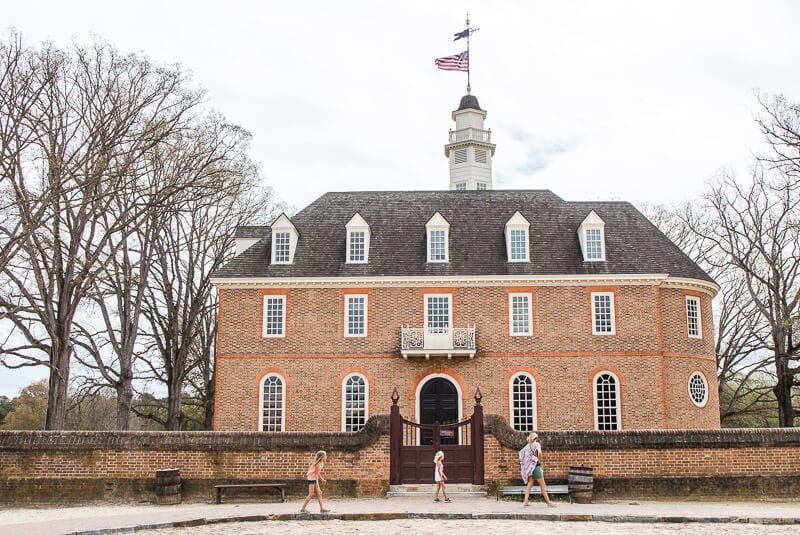
I loved the mesmerizing speech by George Washington at the Governor’s Palace and the firing of the noonday cannon.
We did not get to experience the Fife and Drums March, but we had many people on Instagram mention it as a must not miss experience.
The kids will love Patriots at Play where they can learn and play different 18th Century games.
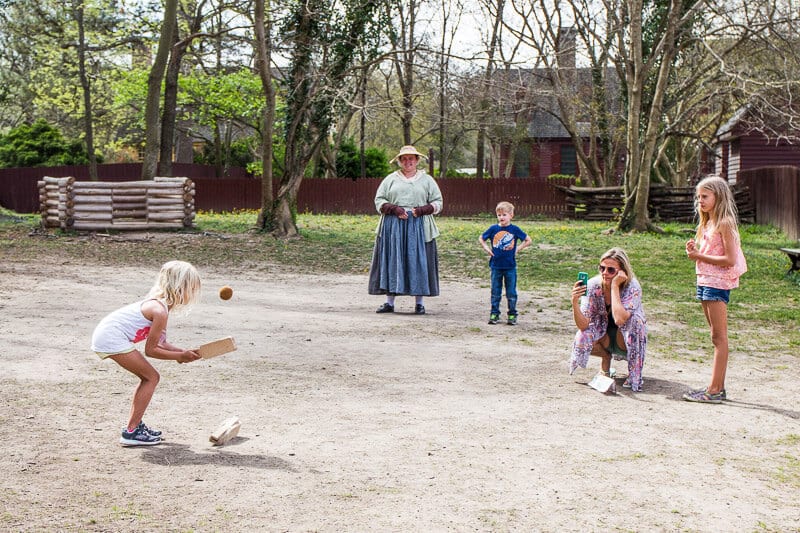
There are eateries and taverns within the historical park if you want to really immerse yourself in 1770 Virginia.
The fun continues into the evening with music, dancing, ghost walks and live performances.
Plan your visit well as there are so many different shows happening and some of the homes and places like the Capitol run tours at certain times of the day.
The Colonial Williamsburg app is super helpful to know what is happening and where. It can also track certain characters around the historical park if you want to stalk them.
Cost: Start at
- $40.99 for 1-day adult ticket
- $20.49 for 1-day youth (6-12)
Open: 9 am – 5 pm daily
Get your Colonial Williamsburg tickets here.
Yorktown Battlefield
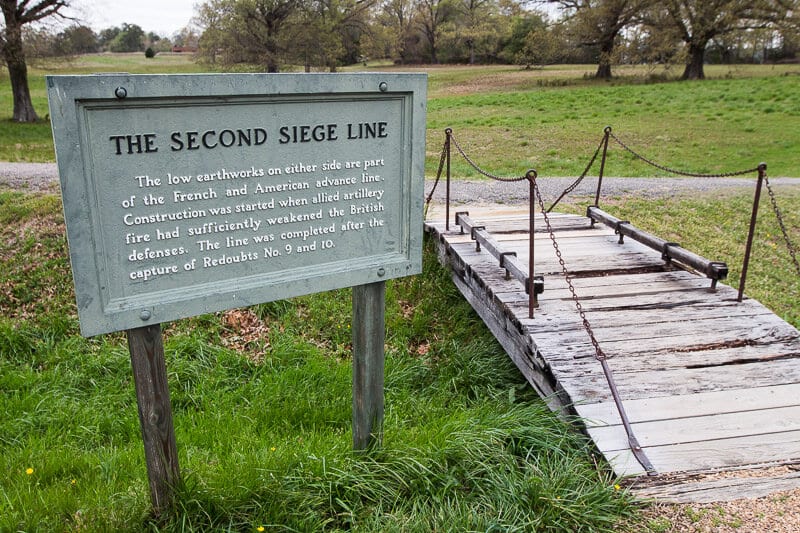
Follow in the footsteps of the brave and determined soldiers sacrificing their lives for their ideals.
Start at the visitor’s center with the introductory video of The Siege of Yorktown. It will put everything into context when you explore the battlefields.
Otherwise, you are sort of just looking at mounds and open fields unaware of their significance.
You can browse through a collection of Revolutionary War artifacts, and see the tent that George Washington used to plan the siege.
Jump in your car and follow the self-guided auto tour map of the battlefields. The historical trail will take you to the significant spots of the siege.
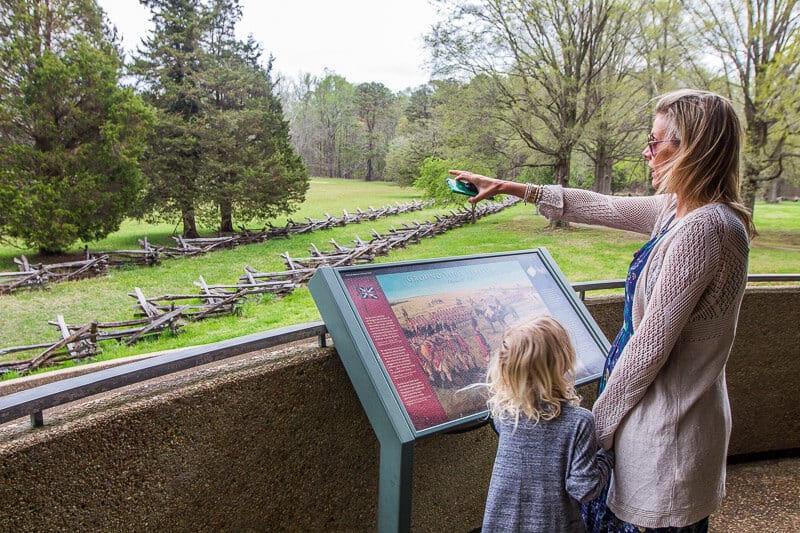
Earthworks and siege lines mark the positions of the British and American troops.
It was fascinating to clearly see how close the two armies were in the battle and where the French and British took control of Redoubt 9 and 10, which ultimately lead to the surrender of the British.
Kalyra was able to understand how the Americans won and what retreat means.
She could clearly see how the British were backed right up to the river and the river was too dangerous for them to cross. So, it was surrender or risk losing all their men.

You then stop at the Moore House were the terms of the surrender were negotiated and the Surrender Field where the humiliated British troops marched to throw down their guns to the cheers of the victorious Patriots.
I think you may even let out a cheer yourself. Take that Red Coats!

Even six-year-old Savannah was so intrigued and asked lots of questions as she pieced together what she just watched the movie and tried to understand the relevance of this war.
Special props to the French, for their assistance in overthrowing the British.
The Patriots couldn’t have done it without them. I didn’t even know they were involved in it until visiting the Yorktown Battlefield!
Cost:
- $7 adults (7-day pass) 16 and over
- Under $15 free
- Keep your ticket to get 50% off the Historic Jamestowne
Open: 9 am – 5 pm daily
American Revolution Museum at Yorktown
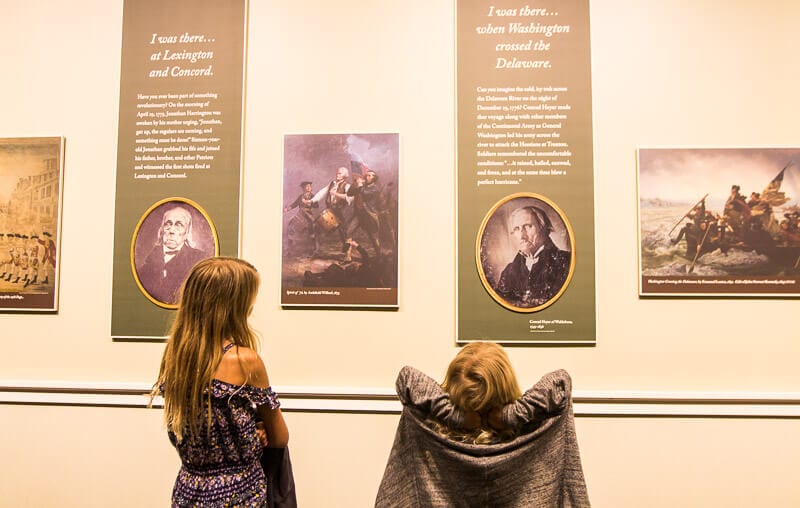
The American Revolution Museum tells the story of the nation’s founding from the twilight of the Colonial period to the dawn of the Constitution.
Personal stories of citizens and soldiers involved are told in the introductory film “Liberty Fever”.
The film shows the events that lead to the uprising, like the Boston Massacre, and took us through the Revolutionary story from the perspective of different people involved, such as a Native American fighting with the Americans; a fierce Irish Immigrant woman loyal to the Patriot Cause: a young terrified Patriot who found his strength and motivation to continue after George Washington fiercely rode into battle at Princeton to help bring back morale.
Begin there and then walk through the galleries and exhibits to learn the incredible story.
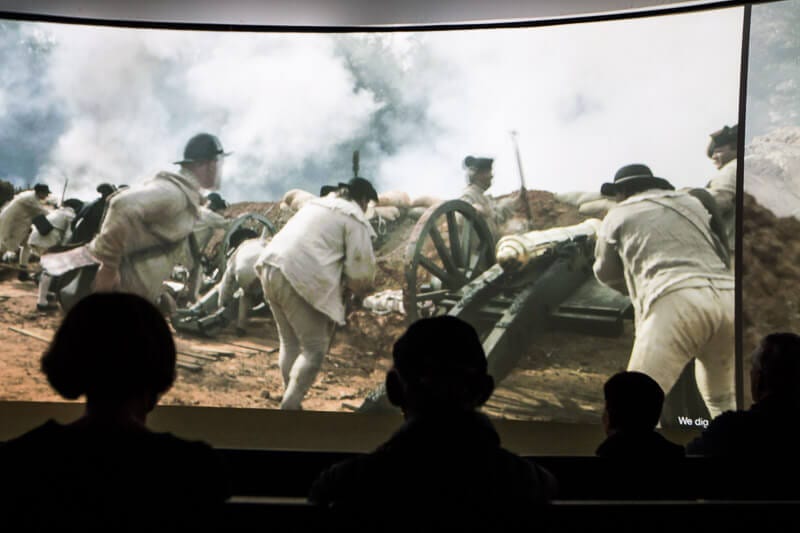
The “Siege of Yorktown” film within the galleries is a must.
It’s shown on a 180-degree screen with special effects that include gun smoke wafting through the air in front of you. It will transport you back to the 1781 battle and victory.
Wander outside to the re-created Continental Army encampment.
The girls loved looking inside the tiny tents that slept 6 soldiers to the more extravagant Commander’s tents.
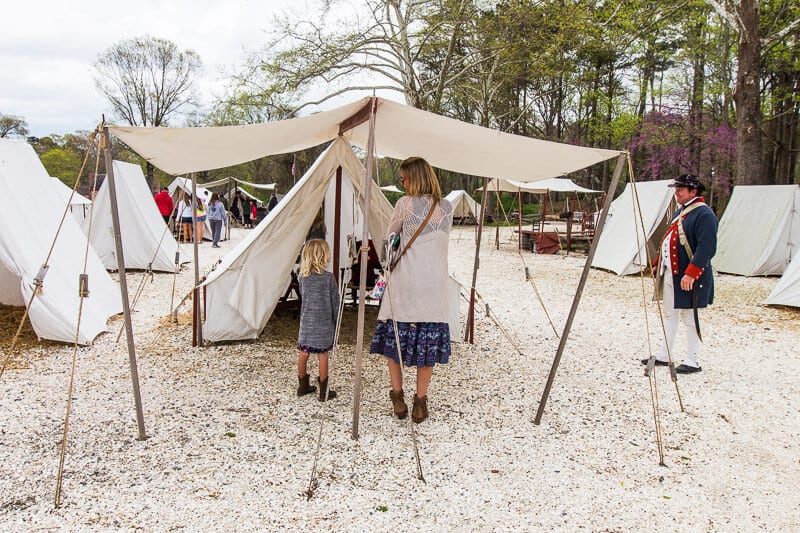
Within the camp are interpreters dressed as soldiers who help to tell the stories.
The surgeon showed us his various tools for performing surgery and caring for his sick patients and one of the soldiers explained how effective the firing line was considering the challenging circumstances of war and why it was designed that way.
He then gave us a musket firing demonstration.

You can engage with the Declaration of Independence to understand it a little more.
There’s a neat section on the Constitution where you can click on various parts to see how it applies to various aspects of life in 2018.
I thought it was clever to make it so relevant for children and help them grasp its meaning.
Don’t forget to write what freedom means to you on the Liberty Tree.
Cost:
- $17 adults
- $8 ages 6-12
- Combination ticket with Jamestown Settlement $25.50 adults, $12.25 (6-12)
Open: 9-5pm daily, year-round and closing 6 pm June 15 – August 15
I loved our time visiting the historic areas of Greater Williamsburg with the girls.
It’s an invaluable learning experience for kids and adults. I gained so many insights and a new perspective on American culture and discovered some new heroes, as did the girls.
Parents, want to take your kids out of school to travel?
No problem. Just let your child’s teacher know that you are going to make their teaching life a little easier.
You’ll take a few days off school to visit Greater Williamsburg and learn all about the beginnings of the United States and gain a firm understanding of the principles that govern the country.
You only need to live it in a day to know it forever.
Where to Stay in Greater Williamsburg VA
We stayed at the Wyndham Garden Inn which is one of the hotels near Busch Gardens Williamsburg VA.
Everything is relatively close in Greater Williamsburg, so you could stay closer to the historic Colonial Williamsburg area and still access the theme park easily.
More Virginia Travel Tips
- Family getaway to the Shenandoah Valley (what to do)
- An East Coast Revolutionary War Trail Road Trip
- Visit to Luray Caverns, Virginia
- Spring getaway to Virginia’s Blue Ridge
- 22 Things to do in Roanoke, VA
- Walking an alpaca at Point of View Alpaca Farms
Pin This to Pinterest:
Have you visited Greater Williamsburg VA before? What did you learn from the history there? What was your favorite part?
